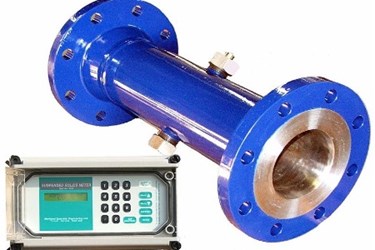Suspended Solids Density Meter: Automation Based On Concentration

A Suspended Solids Density Meter, from Markland Specialty Engineering Ltd., helps industrial plants by monitoring the concentration of process slurries and water/wastewater sludge in pipes, tanks, re-circulation loops and clarifiers, and automating sludge removal.
This process control instrument provides real-time knowledge of slurry and silt/sludge concentrations. Using non-radioactive ultrasound (no permits, no approvals needed), the Meter continuously measures percentage suspended solids and supplies the readings that enable calculation of mass flow rate. This vital information allows operators to determine dry/liquid additive dosing for preferred slurry concentrations. It helps users determine polymer dosages for improved feed density and, by allowing operators to program underflow pumps to shut off before sludge density becomes too thin, enhance filter press/centrifuge performance. Also, by observing changes in density, operators may gain early awareness of breaks in filtration material. These efficiencies improve outflow available for reuse.
A sensor on the Meter (available as an inline pipe spool-piece or throw-in style probe) transmits and receives the ultrasound waves. It sends out a pulse of sound, receiving a strong echo and reading zero when the solution is clear. When solid particles are present in the liquid, they absorb or deflect the sonic energy, the echo is reduced in amplitude, and the Meter starts to read the slurry/sludge density. Readings are not affected by the colour of particulates or fluid.
The inline pipe spool-piece sensor is non-intrusive. A throw-in style probe is also available, which can be used as a single point interface level detector as well, allowing operators to program de-sludge pumps to turn on when the rising sludge blanket contacts it. Each style is simple to install, calibrate and clean.
Markland’s Suspended Solids Density Meter offers that up-to-the-minute data that gives increased control of influent, mix-tank and wastewater concentrations, and the attendant benefit of reduced material and energy use.
Source: Suspended Solids Density Meter
